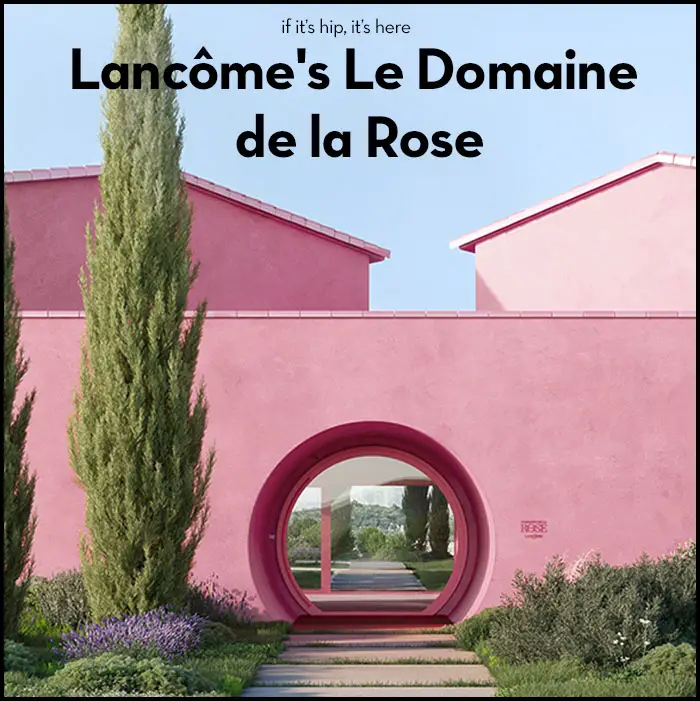Lancôme’s Le Domaine de la Rose is a one-of-a-kind estate, at the heart of France’s Grasse region, recently acquired by the brand. The 9.8 acre site houses their two part project: to develop global agricultural activity in regards to cultivating roses and perfume plants for their products, and to restore the main house on the property using local, recyclable and bio-based materials.
Lancôme Le Domaine de la Rose
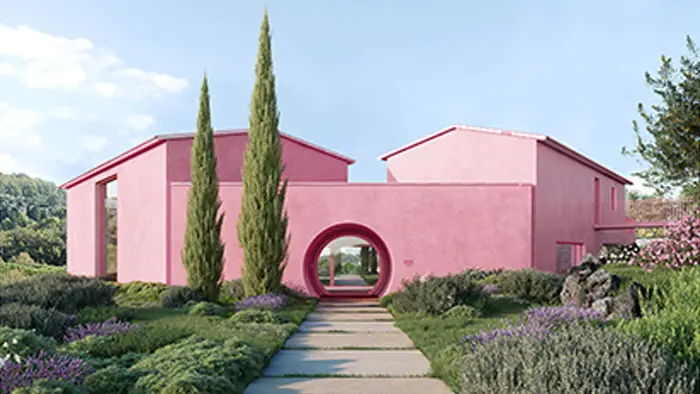
By using an agricultural and architectural approach, Lancôme’s Le Domaine de la Rose is an example of the brand’s commitment to biodiversity through the respectful production of its raw materials. The major areas that comprise the project are the development of agricultural activity with the cultivation of flora for fragrances, as well as the restoration of the main house and the preservation of the arboreal heritage.
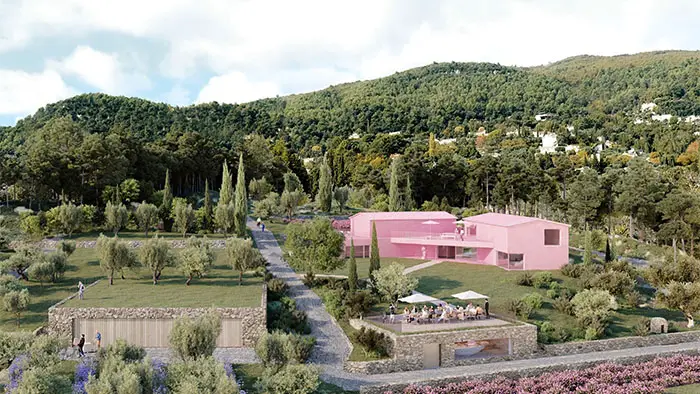
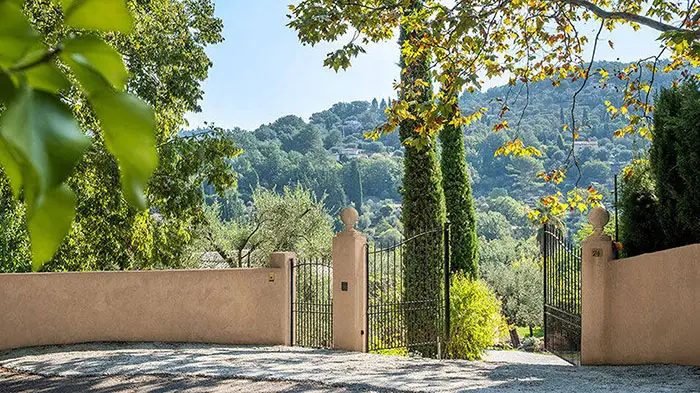
They are innovating the cultivation of plants using sustainable, traceable, organic methods. The brand is using also employing agroforestry practices to conserve the trees in the area.
The Centifolia rose that Grasse is known for, also sometimes called the Rose of May, have long been the symbol of Lancôme and those grown here will be woven into many of their beloved fragrances. On the 12 acre site of Domaine de la Rose, it’s the Centifolia rose that takes center stage, along with the jasmine, and lavender, also found in Lancôme’s many perfumes.
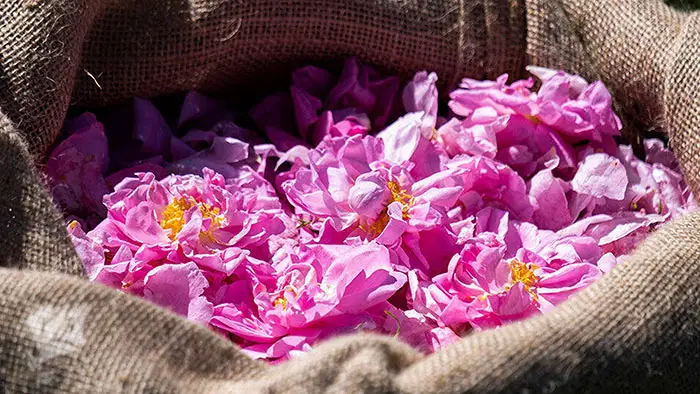
They’ve helped to preserve local species by providing a sanctuary -and keeping a biodiversity audit*- for the 163+ species of plants, 33 species of birds, 31 species of butterflies, 8 species of dragonflies, 12 species of bats, and other animals observed and recorded on the grounds.
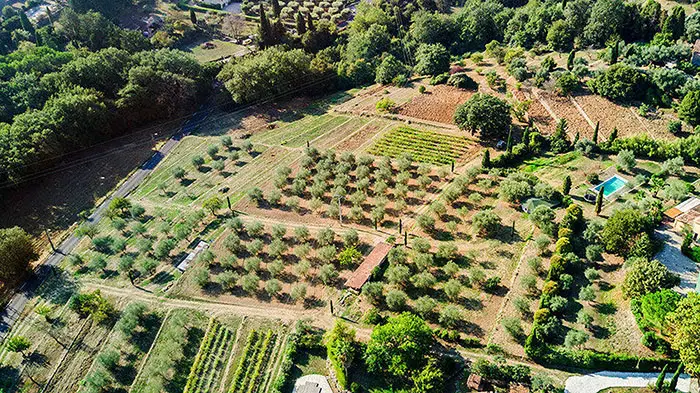
Lancôme uses 99% organic roses in its skincare and makeup products. By 2025, the brand plans to use 100% organic roses, 60% of which will be grown in France.
“The rose has always been important to Lancôme. We are happy and proud of this purchase, which reinforces our presence in Grasse, the world birthplace of perfumery. The brand, which is already established in the region, particularly through a noteworthy exploitation of a rose field in Valensole for its skincare ranges, will continue growing its own proprietary roses as part of its responsible, traceable sourcing approach. Our aspiration was to restore the estate with respect for its agricultural vocation and the equilibrium of biodiversity, while integrating modern and sustainable renovation techniques. In an effort to pass along its expertise, Lancôme also intends on sharing the traditional savoir-faire of the Rose with both internal and external audiences through the acquisition of this property,” Françoise Lehmann, General Director of Lancôme International.
The estate’s unique architectural heritage is preserved by utilizing the existing natural stone walls, water channels, and trees. Architects Lucie Niney and Thibault Marca from the NeM agency, were tapped to renovate the Rose House (the main existing building on the property). Conserving the existing Provence-style, the new agricultural buildings are constructed in harmony with the appearance of the existing dry-stone walls** in order to blend in with the natural landscape. Pink was chosen for the outdoor cladding, roofs and carpentry, both for its natural connection to the local flora and to give the estate a contemporary feel.
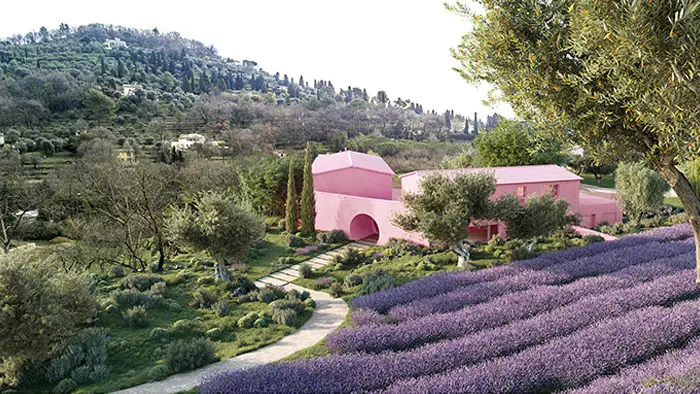
The walls of the main house have been renovated and insulated from the exterior with a combination of lavender straw and wood fiber, coated with pink lime plaster, reducing environmental impact. A water recuperation-and-reuse system, and an irrigation system that uses rainwater, ensures water self-sufficiency. Air conditioning is provided by a geothermal heat pump completed by the natural ventilation of a ground-coupled heat exchanger. These installations have enabled the project to gain the BDM (Bâtiment Durable Méditerranéen or Sustainable Mediterranean Building) Gold certification.
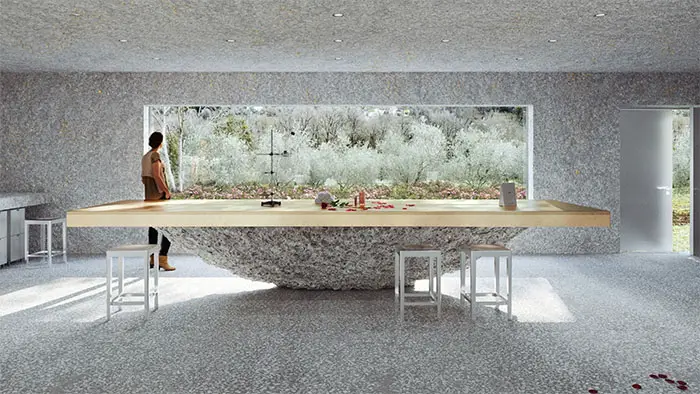
Beginning in June 2022, the general public will have the opportunity to discover fragrance compositions produced using the new Rosa x centifolia grown at Le Domaine de la Rose: the new perfume La Vie Est Belle Domaine de la Rose and the fragrance Maison Lancôme 1001 Roses. And by 2023, the estate will be open to the public where they can discover educational courses and the perfumery savoir-faire of the House.
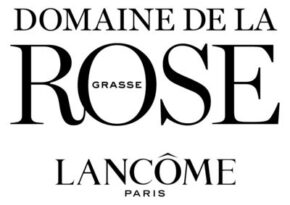
all images and information courtesy of Lancôme
**The existing dry-stone walls were conserved and restored according to the traditional method
*An inventory of the biodiversity is conducted to develop the database of the Biodiversity Atlas of Grasse and is an integral part of the objectives of the Grasse Ecological Transition Contract (CTE).
